Follow the traces of the Romans, nomads and Indiana Jones by exploring the ancient monuments of Petra in the Wadi Rum desert in Jordan
City of Petra is the most visited tourist site in Jordan. And how! It is one of the “seven new wonders of the world” and Petra has been listed as a UNESCO World Heritage Site since 1985. We offer you a complete guide to help you visit Petra in Jordan with a historical and practical approach.
A little history and geography on Petra
Ancient city in Jordan, Petra was once the capital of the Nabatean people, traders who came to dominate international trade in the Middle East 2000 years ago. After a fulgurating rise in power, they briefly challenged the power of Rome before succumbing to it. They then disappeared from history.
The Nabateans were originally a tribe of Arab nomads who ventured into the desert around the 5th century BC and settled in the mountains of Shara south of Jordan, at the crossroads of commercial roads. In 350 BC, they renounced the looting of camel caravans in favour of applying a tax applied to merchants for their safe passage. Being held at a neuralgic point of trade between Asia, Arabia and the Mediterranean, their base of Petra (a Greek name that means “rock”) has become amazed. The incense and myrrh came from Yemen. Pepper, sugar, ginger and cotton were negotiated with India. The merchants exchanged Chinese silkries against gold and silver. When the Roman general Pompey arrived to attack Petra in 62 BC, the Nabateans simply bought it.
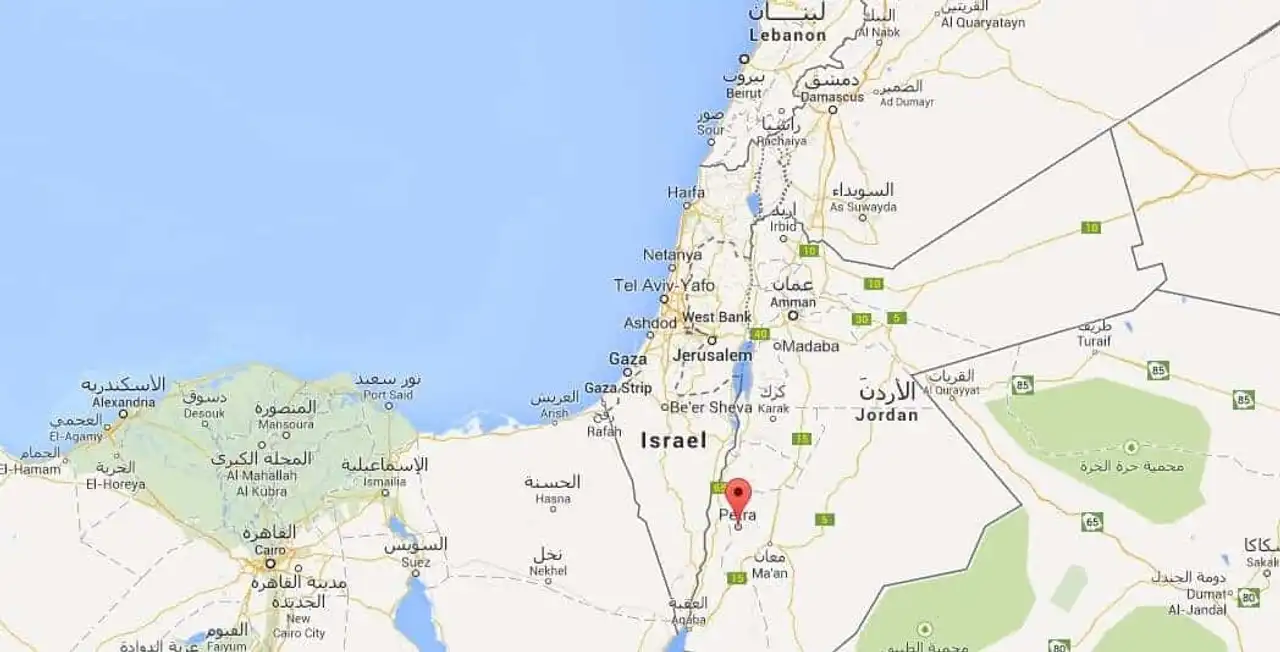
Google Maps Printing – Petra Geographical Situation in Jordan
In the first century of our era, Petra perhaps housed 35,000 people. The Roman geographer Strabon described it as a cosmopolitan city , full of beautiful buildings and gardens. In 106 AD, the Nabateans gave power to the Romans, creating an era of prosperity that lasted until after the adoption of Christianity in 324. However, changes in the trade structure have led to their decline. In 749, when a new earthquake destroyed almost all the buildings, Petra was more or less abandoned.
This was the case for a millennium, until the Swiss explorer Jean Louis Burckhardt persuaded the Bedouins to guide him to the ruins in 1812. The "rediscovery" of the legendary city fueled a renewed interest among travellers and archaeologists who are still alive today.
Why visit Petra?
Petra is one of the most fascinating historical sites in the world, combining romanticism, visual theatre and adventure. A first glimpse of the Khazneh , one of Petra’s treasures, which is the iconic façade made famous in Indiana Jones and the Last Crusade , stay long in your memory.
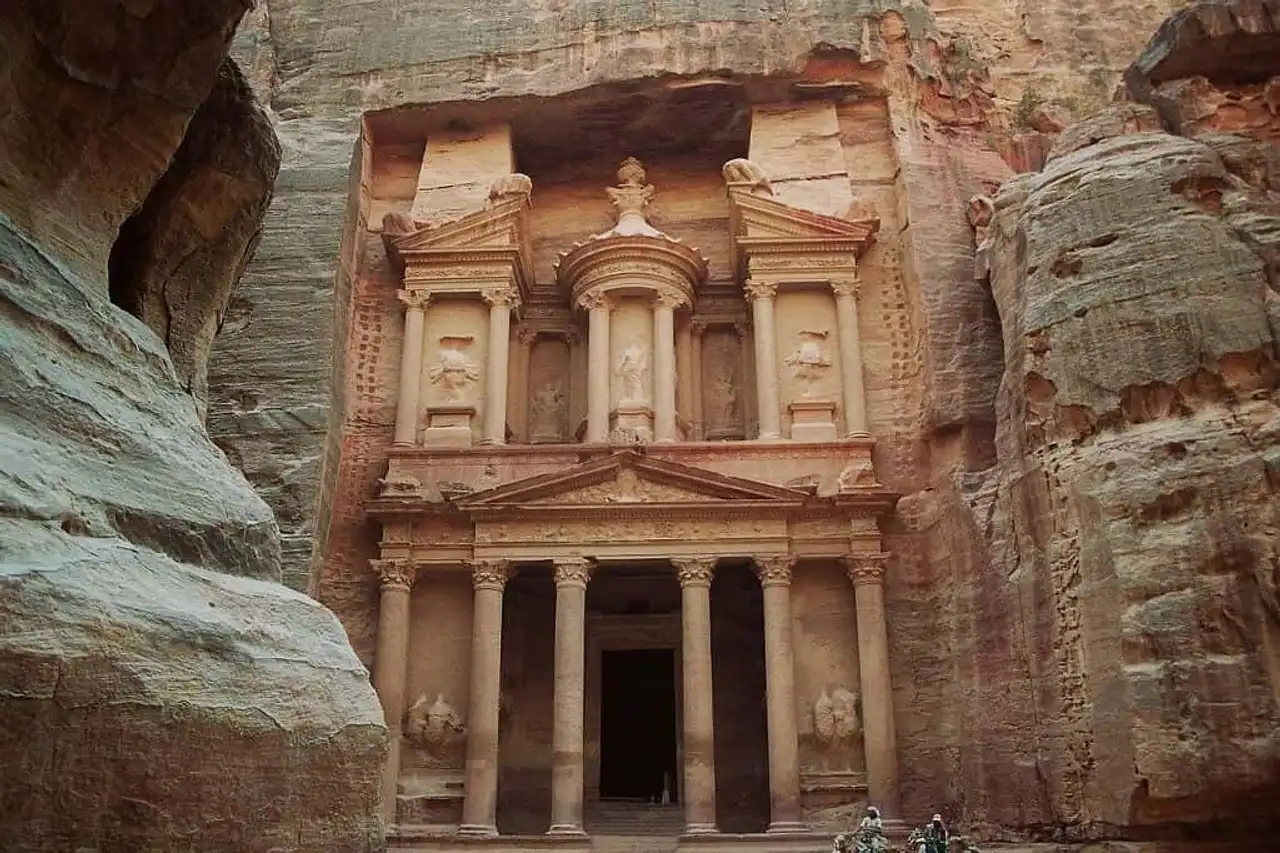
Pixabay – stux
The Nabateans built the Khazneh, the "honey of Pharaoh", and most of Petra's grandiose buildings as the sculptures carved in the sandstone cliffs. It is this calibration of human creativity in this robust environment that made Petra so remarkable. The ornamented facades, in a unique style of the Netherlands with Egyptian and assyrian elements, still border the valley, creating a panorama of architectural riches under the rocks of several hundred meters high.
To this you can add a supernatural impression due to the events of history, biblical stories, legends and local tales that all converge in Petra, on a film background of hidden valleys, inaccessible summits and ravines without background.
What to do and see in Petra?
Visit Petra not just to see the façade we all know thanks to the films and photos. The entrance of Petra is a long and sinuous sandstone canyon (defiled) known as Sîq . Before you enter this canyon, you will pass in front of the tombs of Gaïa the Necropolis of the current village of Wadi Moussa.
In the Sîq , whose path is sometimes hardly wider than a tense arm, you will walk for 1.5 km between narrow and high walls of 100 meters. Throughout this, you will be able to observe the ingenious water reserve and distribution system built by the Nabateans.
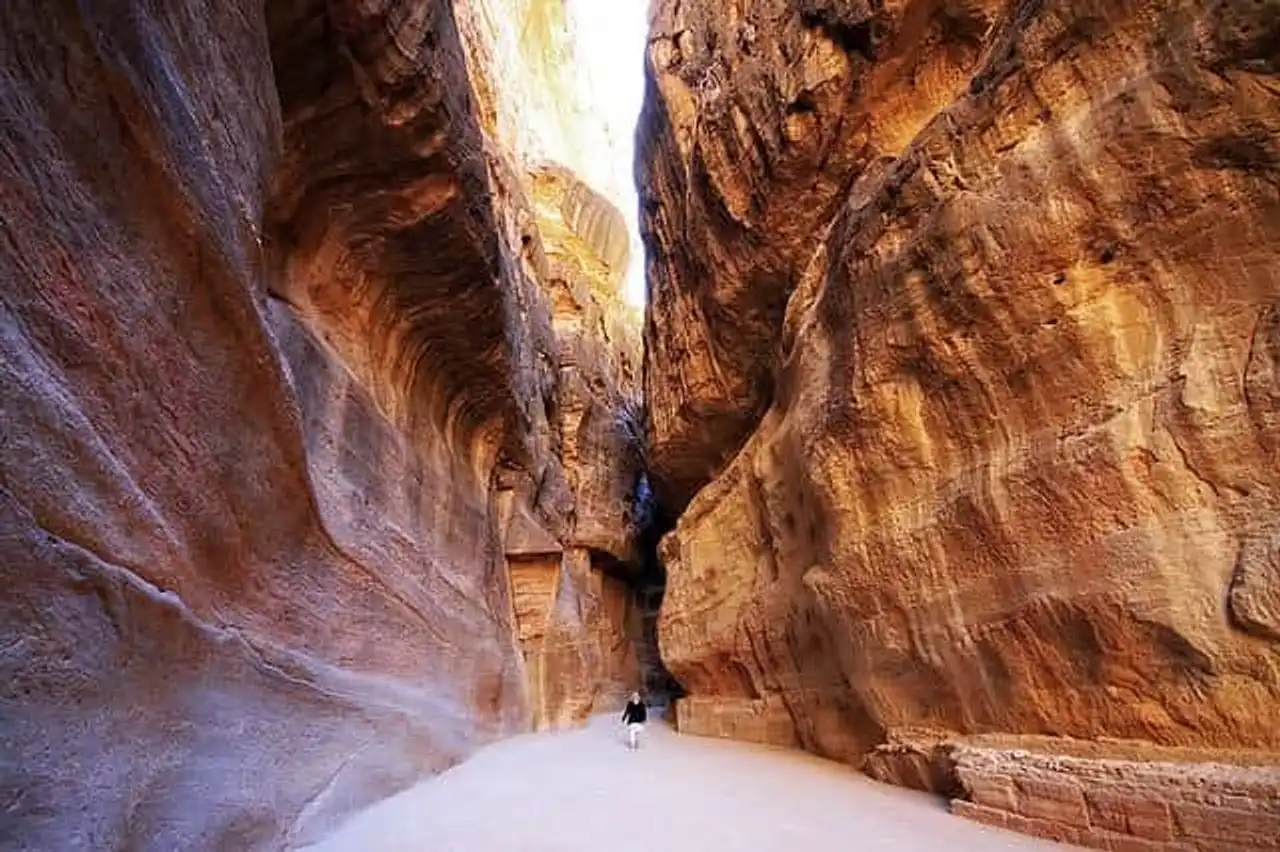
The parade or Siq – Flickr – Allan Grey
At the end of the parade, you gradually see the façade of the Treasury or Khazneh an imposing structure of 40 meters high and 28 meters wide, which would have been erected around the 1st century BC and would be the tomb of a king or queen, probably King Arétas IV. He is also called the “Pharaoh treasure” because the Bedouins believed that the funeral urn contained a treasure. We can still see bullet impacts following attempts on their part to break it.
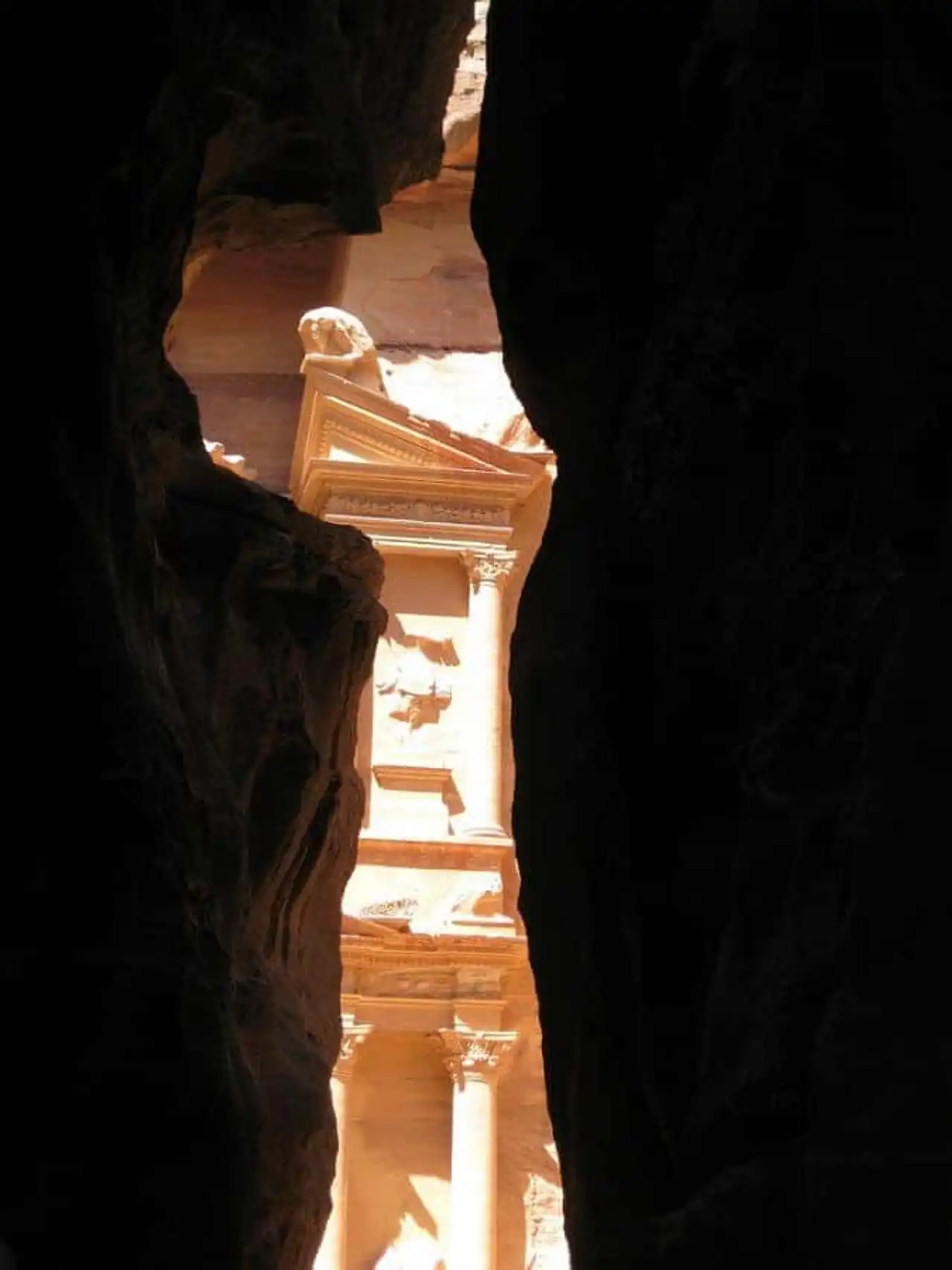
What you will see at the end of Siq – Flickr – Jeff
After the "Treasury", you will see the street of facades , where the Hellenic facades are succed with traditional Nabatéan temple/tombeaux carved in the rock as the Tomb in the Urne , Tombe Palais , Corinthian Tomb and El Deir a monastery that resembles the Khazneh. More surprisingly, you will discover a Roman theatre that could accommodate between 3000 and 8500 people.
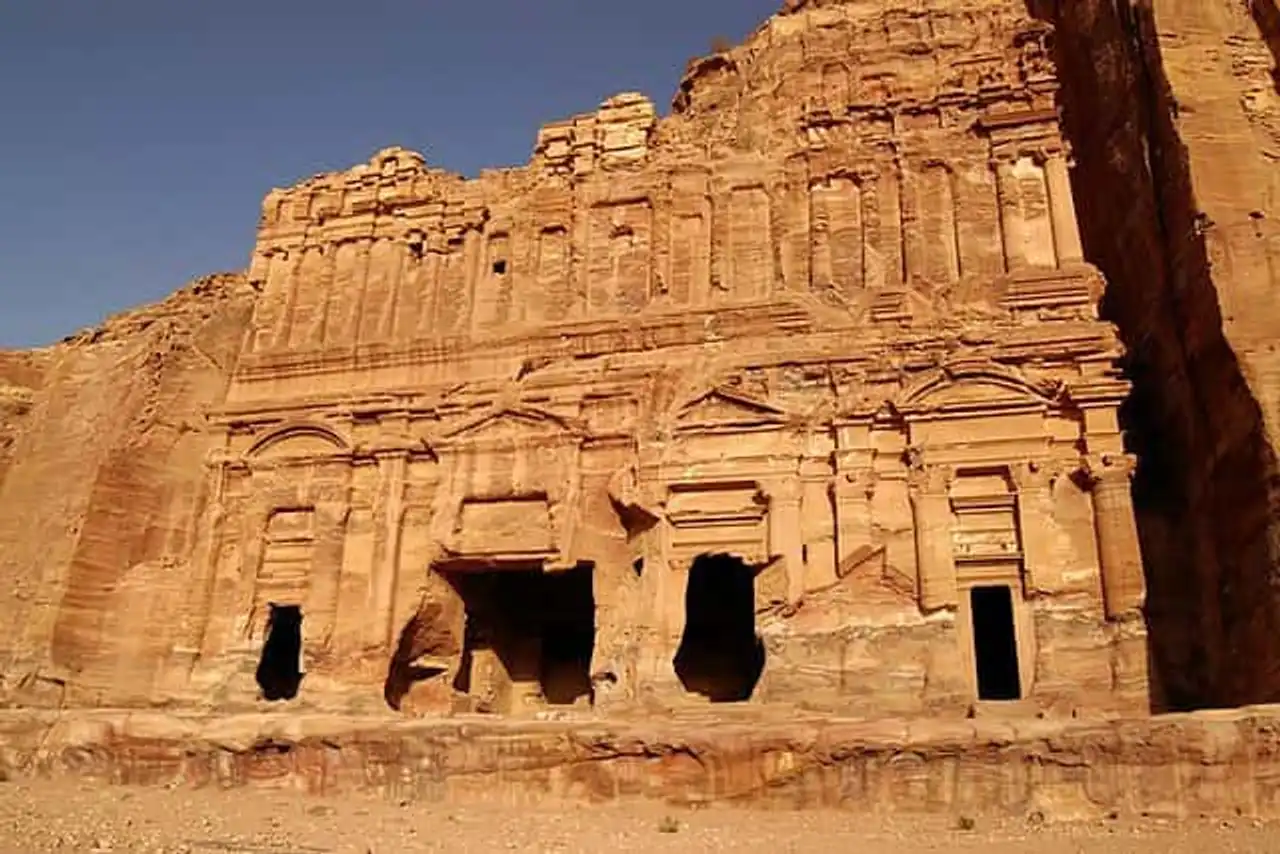
Tomb Palace or Tomb – Flickr – poplar
If you have the chance to spend a second or a third day in Petra, you will get to vestiges like Top place of Sacrifice or Fontaine au lion and other tombs. You can also spend more time on the scene and walk more slowly. A second day is great to hike around the site and admire Petra with a different eye.
How to get to Petra?
You don’t need to be an adventurer like Indiana Jones to go to Petra. The city is easily accessible by road, located about 250 km south of the Jordanian capital, Amman. All offers group travel in Jordan spend at least one day in Petra, but you really need to spend more time in this place (if possible).
Hotels for all budgets are close to the city of Petra, in the city of Gaia ( Wadi Moussa ), and the visit independently or with a guide is simple.
Also read: In which district of Amman?
When to visit Petra?
The best time to visit Petra is at spring and fall because temperatures are not too high and tourists are less numerous. The ticketing is open from 6 am to 6 pm in summer and from 6 am to 4 pm in winter, and Petra closes at sunset. The ideal is to arrive in front of the Khazneh early, around 6:30 am – 7 am, when the sun illuminates the facade and there are only ten visitors with you. The best time to explore Petra is between 10am and 4pm.
Entrance fee to visit Petra
It is possible to take a ticket for 1, 2 or 3 days. Entrance for one day costs 50 JOD (52,95 EUR), for two days 55 JOD (58,25 EUR), and for 3 days 60 JOD (63,54 EUR).
Once the entrance is paid and passed, you will see that horses are available “free of charge”, but once you get on it, the person will tell you that the tip is at least 20€ (about). So prefer to walk, and then plan good comfortable shoes to hike.
Visiting Petra at night is possible

Wikimedia – Zhu tian2000
If you wish to discover the ancient city of Petra at night , it is possible. A visit is called Petra By Night and includes a magical candle walk through the Sîq at nightfall. It takes place every Monday, Wednesday and Thursday at 8:30 pm and costs 12 JOD (13€). The night trip ends at 10:00. You can book this at your hotel, and there is no need to take a one-day ticket to get it.
Have you visited Petra? Tell us your stay in the comments!
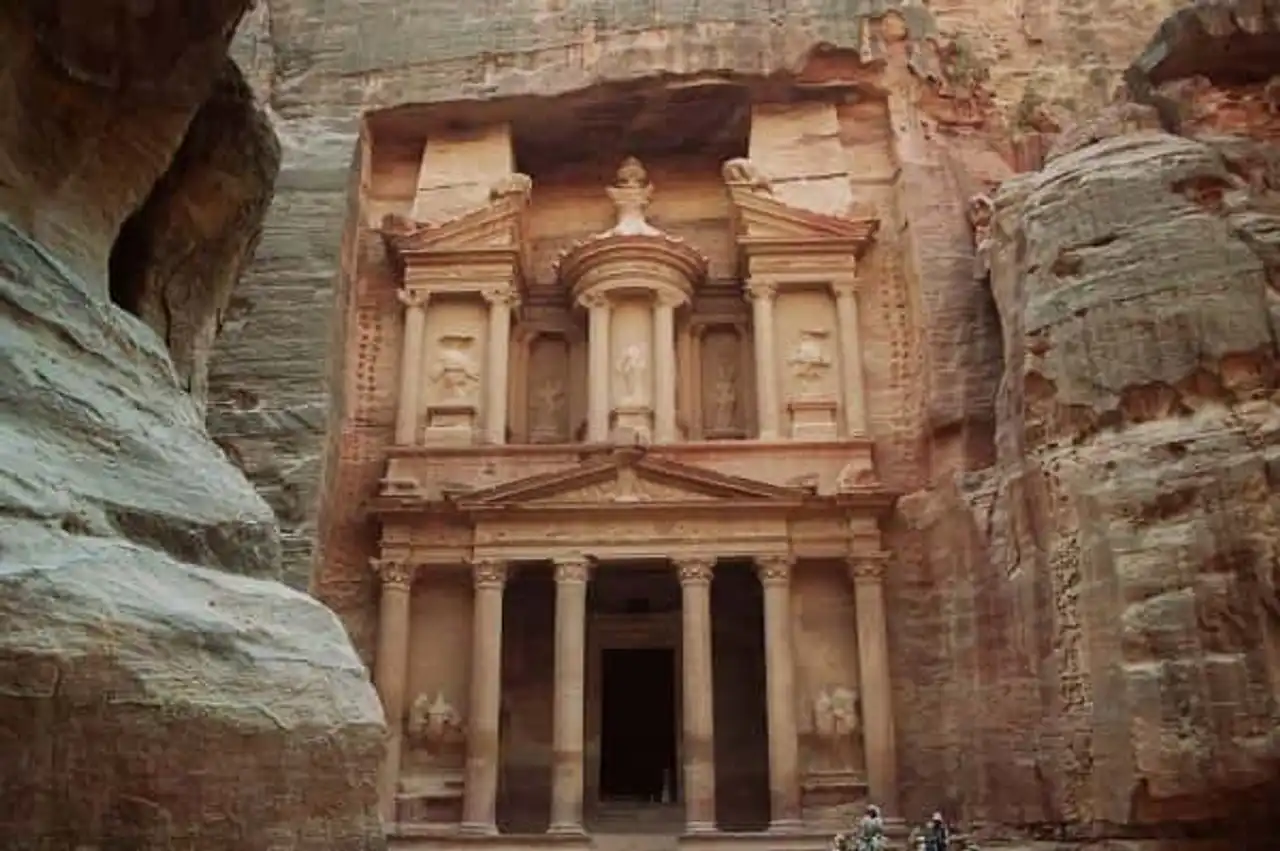







Loading comments ...